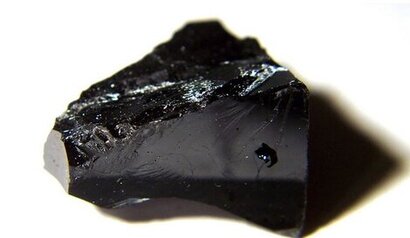
Announced in August 2022, CTAC is a three-year consortium intended to accelerate the development of cadmium telluride (CdTe) technologies by lowering the cost and increasing the efficiency of these thin-film solar cells. NREL released the request for proposal notice for small projects in September 2022.
The following projects were selected:
Topic Area 1: High-Efficiency Devices
University of Utah
“The University of Utah will develop sputtered, doped widegap materials and bilayer stacks for back contacts to state-of-the-art CdSeTe/CdTe absorbers. We will focus on p-type materials that have energy level alignment predicting hole selectivity, are amenable to passivation, and have a wide gap to provide transparency for enhanced bifaciality or back mirror cell optics. We will obtain state-of-the-art absorber stacks from CTAC partners and fabricate sputtered back contacts. We will continue to develop our surface photovoltage and SPV spectroscopy techniques to characterise back contact band structure, traps, and recombination activity.”
University of Delaware
“The University of Delaware will develop new approaches for processing Cd1-xZnxTe solar cells that overcome previously reported difficulties, such as ineffective chloride activation and passivation, which prevented the realisation of high performance with increased open-circuit voltage (VOC) relative to CdTe. The approach will be based on two hypotheses: Modification of film growth, including in situ antimony incorporation, can form more equilibrated films with reduced defects and enhanced grain sizes, reducing the need for high-temperature activation; and alternative halide activation chemistries during post-deposition treatments can minimise the deleterious effects of cadmium chloride (CdCl2) activation. A final goal of the project will be to confirm the viability of Cd1-xZnxTe by demonstration of a thin-film solar cell with VOC ≥ 1.0 V.”
University of South Florida
“The University of South Florida will develop alternative device architectures based on n-type CdTe/CdSeXTe1-X(CST) thin-film absorbers to create opportunities to overcome the efficiency limitations associated with the current state-of-the-art p-type CdTe/CST solar cells. The project aims to build upon advances in n-CdTe/CST films that demonstrated group III and VII n-type doping for CdTe films. We will focus on the development of p-type heterojunction partners for n-CdTe/CST absorbers.”
Topic Area 2: Tellurium (Te) Supply
Missouri University of Science and Technology
“The Missouri University of Science and Technology will enhance Te recovery from copper processing (CP) by optimising the current operations to capture the Te, gold (Au), and silver (Ag) that are presently lost to tails. The scope of work involves: advanced mineralogical analysis of different processing streams of the flotation circuit of CP ores to identify Te carriers and modes of occurrence (i.e., Te in the crystal lattice vs. Te-rich inclusions in larger minerals); evaluation of different approaches and flow sheet options for enhanced separation of Te, Ag, and Au minerals from processing streams of CP ores; and techno-economic assessment to estimate the capital and operating costs of the developed flow sheets for successful implementation, which could increase the domestic production of Te from CP ores by at least 50 percent.”
Topic Area 3: Characterization, Modeling, and Simulation
Arizona State University
“Arizona State University will combine the power of hard X-ray microscopy (XRM) and soft X-ray and electron spectroscopies to probe arsenic (As)-doped CdSeTe absorbers and devices. XRM will probe the chemical distribution, atomic environment, and current collection at the nanoscale for the As and selenium (Se) absorption edges. Electron and soft X-ray spectroscopies will enable an area-integrating determination of the electronic structure at surfaces (band edges, surface bandgap) and interfaces (band alignment), in addition to the chemical bonding environment of the sulfur (S), chlorine (Cl), and oxygen (O) in the device. The team is tackling two main questions: How do the chemical states of As (and neighboring atoms) evolve between initial deposition and post-activation? What stressors and processes enhance or prevent activation of As dopants?”
University of Utah
“The University of Utah will assess the role of microstructures in advanced CdTe devices. The goal is to improve the limiting open-circuit voltage while retaining the maximum values of short-circuit current and fill factor of CdTe solar cells by developing a novel architecture built on a comprehensive understanding of local carrier dynamics. We will investigate the interfacial and microstructural characteristics of advanced CdTe (CdSe(1-x)Tex) Passivated Emitter and Rear Contact (PERC) solar cells. A microcontact array platform with tunable pattern geometry will enable measurements of global (patterned CdTe PERC) and local carrier transport, delineating the contribution of grain bulk and grain boundaries to overall photovoltaic performance. Using complementary electron/optical microscopy, we will correlate the transport characteristics to the microstructural properties of each sample set (e.g., GrV-doped vs. copper (Cu)-doped CdTe PERCs).”
CTAC is funded by DOE’s Solar Energy Technologies Office (SETO). Learn more about the CTAC.
For additional information:

